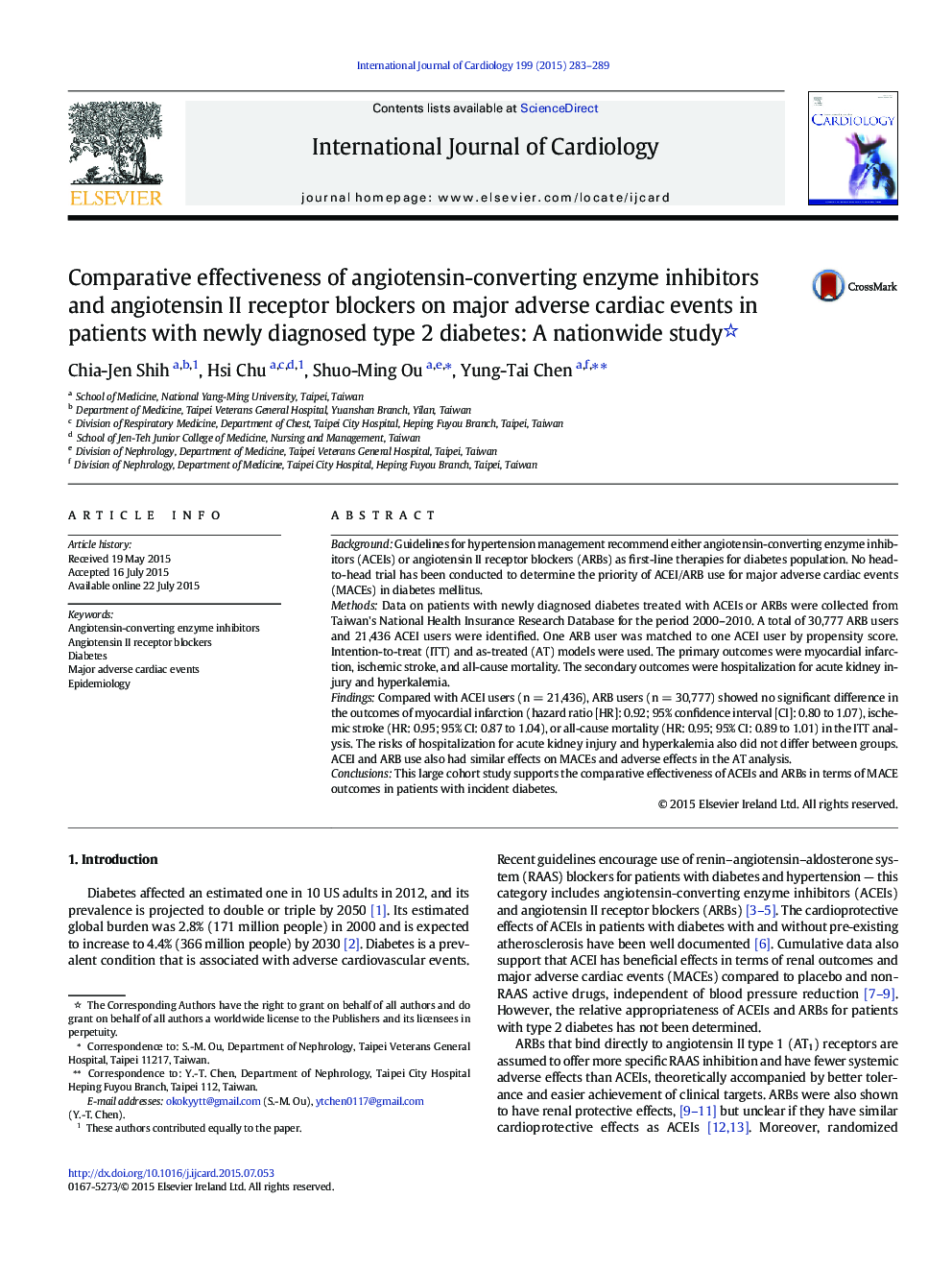| کد مقاله | کد نشریه | سال انتشار | مقاله انگلیسی | نسخه تمام متن |
|---|---|---|---|---|
| 5965883 | 1576153 | 2015 | 7 صفحه PDF | دانلود رایگان |

- Use of ACEIs was comparable with ARBs in MACE among patients with incident DM.
- There was no significant difference in AKI or hyperkalemia between ACEI and ARB users.
- ARBs are an equally effective alternative for patients with DM intolerant to ACEIs.
BackgroundGuidelines for hypertension management recommend either angiotensin-converting enzyme inhibitors (ACEIs) or angiotensin II receptor blockers (ARBs) as first-line therapies for diabetes population. No head-to-head trial has been conducted to determine the priority of ACEI/ARB use for major adverse cardiac events (MACEs) in diabetes mellitus.MethodsData on patients with newly diagnosed diabetes treated with ACEIs or ARBs were collected from Taiwan's National Health Insurance Research Database for the period 2000-2010. A total of 30,777 ARB users and 21,436 ACEI users were identified. One ARB user was matched to one ACEI user by propensity score. Intention-to-treat (ITT) and as-treated (AT) models were used. The primary outcomes were myocardial infarction, ischemic stroke, and all-cause mortality. The secondary outcomes were hospitalization for acute kidney injury and hyperkalemia.FindingsCompared with ACEI users (n = 21,436), ARB users (n = 30,777) showed no significant difference in the outcomes of myocardial infarction (hazard ratio [HR]: 0.92; 95% confidence interval [CI]: 0.80 to 1.07), ischemic stroke (HR: 0.95; 95% CI: 0.87 to 1.04), or all-cause mortality (HR: 0.95; 95% CI: 0.89 to 1.01) in the ITT analysis. The risks of hospitalization for acute kidney injury and hyperkalemia also did not differ between groups. ACEI and ARB use also had similar effects on MACEs and adverse effects in the AT analysis.ConclusionsThis large cohort study supports the comparative effectiveness of ACEIs and ARBs in terms of MACE outcomes in patients with incident diabetes.
Journal: International Journal of Cardiology - Volume 199, 15 November 2015, Pages 283-289